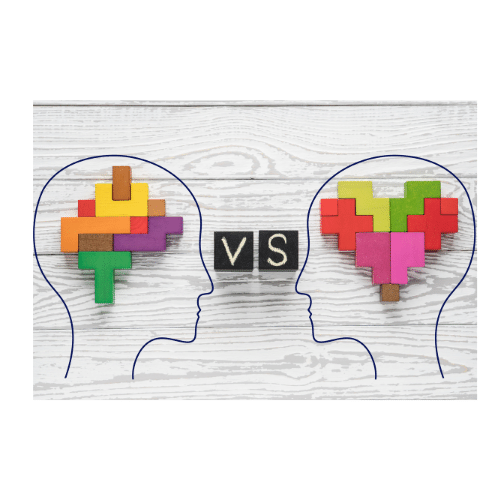Table of Contents
- 1 Motivation…Without a desire to win, it is impossible to remain competitive.
- 2 What is motivation?
- 3 The Components of Self-Determination:
- 4 Principal Differences Between Inspiration and Motivation:
- 5 Consider the following four commonalities to distinguish between motivation and inspiration:
- 6 Instances of creativity:
- 7 Conclusion:
Motivation…Without a desire to win, it is impossible to remain competitive.
Goals are essential for success at every stage of life, and they can only be achieved via self-motivation.
Every individual should have a source of inspiration. When motivation comes from within, we are imbued with energy that propels us forward.

Self-motivation adds to all aspects of our lives and aids in our development, from simple to difficult decisions. Self-motivation is not innate; rather, it may be cultivated, developed, and exploited throughout life; this is known as personal development.
What is motivation?
Motivation enables you to perform your tasks with more concentration and clarity of vision. When you are inspired, you will achieve the goals you have set.
The combination of excitement and strength with motivation enables us to advance in life. There are external and internal factors that encourage one to achieve a goal and persevere.
Also, motivation allows us to reduce career-related stress and remain optimistic in any circumstance. When you are motivated, you will also be able to address your difficulties with ease.
It enhances concentration
Losing focus can be bad for anyone who is trying to reach a certain goal. Concentration is the most essential trait for achieving success in any endeavor in life.
Without that, you will no longer be able to reach your desired destination. When you are inspired and ready to tackle any obstacles, you will be more focused on your current task.
What provides you with motivation and concentration is entirely up to you. On occasion, however, having an external source of motivation might be an excellent approach to expand your range of concentration.
Begin Thinking Outside the Box
When you are driven, you begin to feel as though you can accomplish anything. This is an extremely beneficial development that must be welcomed fully.
When you begin to think creatively and generate new ideas, it helps you reach your desired destination. You should welcome fresh ideas, and being prompt assists you in doing so.
Encouraged individuals are curious and eager to explore new things. But when you lack motivation, you are more inclined to remain within your comfort zone.
You Will Have A Certain Objective To Strive For
When you’re motivated, it usually means you want to do better in life or have plans to do so.Occasionally, a promotion or a new property is sufficient to provide motivation.
Having a goal to strive towards motivates and improves overall performance in all endeavors. If you begin focusing on the thing you have always desired, you will realize that you are moving in the correct direction and will be successful.
Without a goal, you will not achieve rapid success, and your personality will not develop either.
Motivation is one of the three core categories of personal skills that make up the idea of emotional intelligence.

• Motivation to achieve on a personal level, the desire to improve or meet particular criteria;
• Dedication to personal or organizational objectives;
• Initiative, which he defined as the “readiness to take advantage of possibilities”; and
• Optimism, the capacity to persevere and pursue goals despite failures. This is also referred to as resiliency.
To improve self-motivation, it is therefore helpful to learn more about these different parts.
Self-motivation is, in its most basic form, the power that propels you to do tasks.
Self-motivation is the process of enhancing one’s own motivation. Also, it is necessary to develop your personality. No one can give you motivation.
Only you can accomplish it. It involves an inside procedure. When motivation is internalized, encouragement, knowledge, and clarity of vision result. When you think positively, success and inspiration will follow you everywhere you go.
But, the topic of self-motivation is anything but straightforward. Individuals can be driven by a variety of internal and external factors, such as the desire to do something, the affection for another person, or the need for money.
Often, motivation results from a combination of circumstances.
Self-motivation, or the capacity to motivate oneself, is a crucial skill. Self-motivation compels individuals to persevere despite setbacks, seize opportunities, and demonstrate dedication to achieving their goals.
This page elaborates on this crucial component of emotional intelligence.
The Components of Self-Determination:
1. Personal desire to succeed
You could refer to an individual’s desire to succeed as ambition or personal empowerment. But it is equally important to consider this in terms of mentality.
There are two sorts of mindsets: growing and fixed.
People with a fixed mindset believe that talent is innate and that our level of skill cannot be altered.
People with a growth mindset believe that with hard work and effort, they can enhance their skills.
Research shows that people with a “growth mentality” are much more likely to be successful in any field.So, a growth mentality is essential for personal motivation to achieve.
Being organized, especially when it comes to time management, and avoiding distractions are also important parts of personal motivation.
2. Dedication to objectives
There is a lot of evidence, though most of it is anecdotal, that setting goals is important for our overall health.
“Tie your happiness to a goal, not to people or things, if you wish to live a happy life.” Albert Einstein
“You should establish goals that are unattainable so that you always have something to live for.” Tony Turner
“The greatest danger for most of us is not aiming too high and falling short, but aiming too low and achieving it.” Michelangelo
It makes perfect logic that “if you aim at nothing, it is easy to attain” and that the majority of us require goals in our lives. Having a clear understanding of where you want to be and how you want to get there is essential for maintaining motivation.
3. Take the initiative.
Effectively, initiative is the capacity to seize opportunities when they arise.
It is far too simple to dither, and then the opportunity may be lost. Nonetheless, the proverbs “see before you leap” and “fools rush in where angels dread to tread” have a great deal of truth.
It is also essential to deliberate and ensure that you are making the best selection for yourself.
Hence, initiative can be viewed as a combination of bravery and sound risk management:
Risk management is required to ensure that the correct opportunities are identified and that they present an acceptable amount of risk.
It takes courage to overcome the inherent dread of the unknown in new prospects.
4. Resilience or resistance
Optimism is the capacity to view the world favorably and to think positively. Resilience is the capacity to “bounce back” or remain optimistic in the face of adversity. Although closely related, the two are not identical.
Resilient individuals utilize their cognitive abilities to moderate their negative emotional responses to circumstances. In other words, they employ positive or rational thought to investigate and, if necessary, overcome illogical impulses.
They are also willing to ask for assistance when necessary, as well as offer assistance to those in need.
Types of Motivators: Intrinsic and Extrinsic
While considering self-motivation, it is vital to comprehend what inspires you to do tasks.
There are two sorts of primary motivators: intrinsic and extrinsic.
In their most basic form, these two sorts of motivation can be thought of as:

• Intrinsic: intrinsic to our desires
• Extrinsic: associated with obligations
A more specific definition would be:
Intrinsic: To execute an action or task based on the anticipated or perceived satisfaction of performing it. Intrinsic motivators consist of enjoyment, curiosity, and personal challenge.
Extrinsic: To execute an action or duty in order to receive an external reward, such as money, power, or good grades or marks.
Many things motivate different people at different points in their lives. The same activity may have more intrinsic motivators at times and more extrinsic motivators at other times, and the majority of tasks include both types of motivation
Example: Steve must work in order to pay his mortgage and provide for his family. He finds no fulfillment in his work, and there is no opportunity for advancement. Extrinsic factors are what drive John solely.
Alice works because she loves what she does and finds great happiness and satisfaction in it.Alice has sufficient savings that she does not need to work, she owns her home outright, and she can purchase whatever she desires whenever she desires. Sally’s motives are entirely internal.
Clearly, Steve and Alice are at opposite extremes of the spectrum of self-motivation. Nonetheless, the majority of people fall somewhere in the middle.
Most people have to work to make money, but they also find their daily work lives satisfying in other ways, like being happy with their jobs and being able to talk to their coworkers.
• We have a tendency to perform better when we enjoy our task.
• It’s easier to get up in the morning, we’re happier at work, and we’re happier overall.
Studies indicate that this is especially crucial when we are stressed. If we normally enjoy our work, stress and long hours are far more manageable. So, intrinsic motivators play a significant role in self-motivation for the majority of us.
The Significance of Responsibility:
What if there are no intrinsic or extrinsic motivators for a task?
The only logical conclusion is that we probably won’t do this, since it wouldn’t help.
We all know that this is not always the case. Also, there is the matter of obligation.
Although obligation motivators are neither exactly intrinsic nor extrinsic, they can nonetheless be extremely effective. Our own ethics and feeling of duty, what is right and wrong—are the source of our sense of obligation.
Inspiration is defined as
The word “inspiration” just means a process of stimulating the mind and emotions in a way that makes people want to do something new or great.
When someone truly desires to do something differently, the motivation to do so originates from inside.
The urge is founded on our value system, our beliefs, our life experiences, our preferences, our fantasies, our aspirations, and similar other senses that make us feel better if we do or accomplish something.
In inspiration, you sincerely desire something that you have a persistent desire to attain; you are consistently interested and devoted to obtaining it, and you make time for it and prioritize it. It is a spontaneous inclination.
Principal Differences Between Inspiration and Motivation:
The distinction between motivation and inspiration can be grasped by comparing the following characteristics:
Motivation is the process of getting someone to do something in a certain way so they can reach a goal.Inspiration is the mental and emotional stimulation of individuals to engage in creative activity.
2. Motivation is what compels or convinces you to do action, whereas inspiration is what draws you toward something.
Motivation makes you feel like you’re up against something and competing, but inspiration makes you feel excited and at ease.
4. Motivation doesn’t last long. For example, if you go to a seminar given by a well-known person, you might feel motivated to do something, but after a few weeks or days, you’ll lose that drive.On the other hand, inspiration is something that stays with us and drives us to keep going until the goal is reached.
5. Motivation is derived from an external source, such as a reward, acknowledgement, or praise. Although the source of inspiration is internal, a strong desire within us arises as the source of inspiration.
6. Motivation is a purposeful or calculated urge to take action. In contrast, the impulse in the instance of inspiration is spontaneous.
7. Many factors, including self-imposed or societal expectations, obligations, and peer pressure, push us to do something. Ingenuity is a conscious and deliberate act, while inspiration is a natural urge that comes from deep inside us.
Four commonalities exist between inspiration and motivation:
People frequently ask, “Are inspiration and motivation the same thing?” It is essential to emphasize the commonalities between the two.
Consider the following four commonalities to distinguish between motivation and inspiration:
1. Both motivate us to some degree to take action.
2. They are vital for personal growth and discovering our mission.
3. Both affect our lives in significant or moderate ways.
4. Both require us to think creatively and specifically.
Six illustrations of inspiration and motivation
When it comes to motivation and inspiration, we might all feel like we’re in a slump. Occasionally, we are bursting with one but not the other. Sometimes we may feel as though we have neither. But, you might actually be passing it by.
Here are some instances of motivation and inspiration in action for your consideration:
Examples of incentives:
• You are the member of your hockey team with the fewest goals scored. You want to demonstrate your skill to your teammates and coaches, so you practice longer to become even better.
• You’ve entered a local pie-baking competition, and you hope to win first place. Your pie was a fiasco last year, so you’ve spent the past two weeks experimenting with your recipe. You also want to demonstrate to your friends and family that your pie is tasty, so you source the finest ingredients possible.
• You earned another dismal grade on a school exam. You fear failing the course and do not wish to be required to retake it. You prepare for the upcoming exam by studying every night and requesting extra assistance from your teacher.
Instances of creativity:
• A friend took you to a brand-new museum. You recall how much you used to like painting as a child upon viewing all of these exquisite artworks.
You smile as you unbox your old brushes later that day and begin to paint whatever you like.
• As one of your basic principles, you have always attempted to help people whenever possible. The individual in front of you at the grocery shop was $5 short on their bill.
You recall a time when a stranger gave you some money, which you then passed on to the person in front of you.
• In your backyard, there are a few trees and plants. During a hike, you stop to observe the scenic beauty of the forest. You return home feeling energized and begin planting flowers.
Following a great season of flower care, you plant a large tree in your yard.
How can you mix inspiration and motivation to attain your objectives?
We recognize that these two ideas are essential to reaching our objectives. It can be difficult to improve our motivation, inspiration, and energy. Nevertheless, nothing is impossible.
To stay accountable, we can mix our motivation and inspiration. On days when we feel devoid of drive, self-accountability and inspiration will motivate us to continue working.
Being accountable for our actions is also beneficial when we make errors. Failure or stumbles may cause us to ponder giving up. Yet, continuing and finding inspiration when we fail is a crucial component of holding us accountable.
Establishing objectives that are unrealistic might also hinder your inspiration and motivation. Consistently falling short of your ambitions may leave you with the impression that you will never realize your dreams.
Research shows that we are more committed to our goals when we understand their importance, value, and do-ability.Sometimes, our drive can lead us to do hard things, but with inspiration, we can see how important they are and keep moving forward.
Objectives require a great deal of dedication and persistent effort. They can be broken down into smaller goals that continue to motivate development while still pursuing the larger objective.
Research indicates that writing down our goals and continuing to set new ones generates a cycle of motivation.
Crossing items off our to-do list will motivate us to continue working, so larger objectives should be broken down into steps. We are more likely to maintain our success if we have a method that demonstrates how to do so.
Moreover, being aware of the internal or external influences that motivate us might enhance our self-awareness.
Motivation can be learned or developed into a habit. If a list’s extrinsic motive is necessary to prevent our inspiration from stopping, then so be it.
Inspiration is more difficult to produce, but if we find it, we will be much more focused.
Four advantages of blending inspiration and motivation:Four advantages of blending inspiration and motivation:
We must not forget that the lessons and skills we acquire along the way are as vital as achieving our objectives.
Combining motivation with inspiration provides the following four advantages:
1. You inspire people and show them how to solve their problems with motivation or inspiration.
2. As you watch other people go after their goals, you become more caring, understanding, and empathetic.
3. You become both more imaginative and more realistic in your goal-setting.
4. Your interests expand, and you confidently explore new things.
Conclusion:
After looking at the above criteria, it’s clear that these two are very different, but that doesn’t mean one is better than the other.
Motivation is used when you want people to behave in a particular way and act immediately, while inspiration is used when individuals desire to accomplish something that will enhance their lives.
https://psytify.com/book-summaries/motivation-and-inspiration/
https://psytify.com/personality-types/


